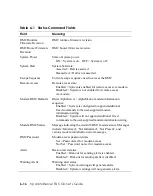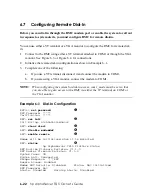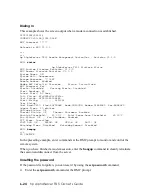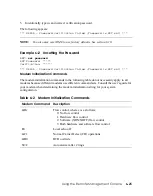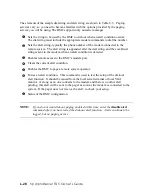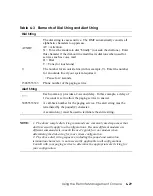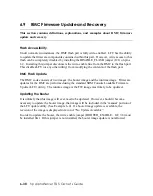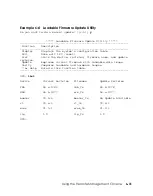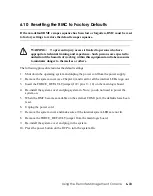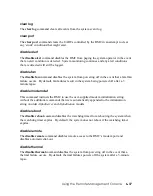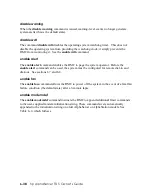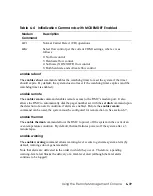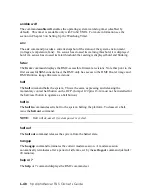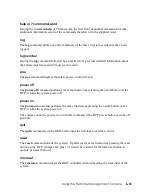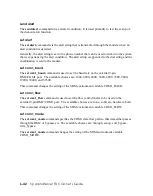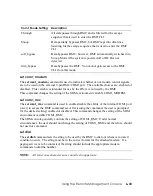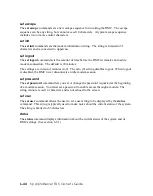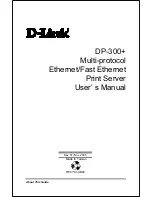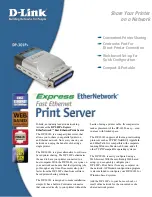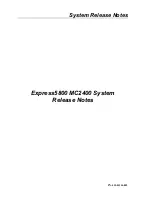
Table 6–3 Elements of Dial String and Alert String
Dial String
ATXDT
The dial string is case sensitive. The RMC automatically converts all
alphabetic characters to uppercase.
AT = Attention.
X = Forces the modem to dial “blindly” (not seek the dial tone). Enter
this character if the dial-out line modifies its dial tone when used for
services such as voice mail.
D = Dial
T = Tone (for touch-tone)
9,
The number for an outside line (in this example, 9). Enter the number
for an outside line if your system requires it.
, = Pause for 2 seconds.
15085553333
Phone number of the paging service.
Alert String
,,,,,,
Each comma (,) provides a 2-second delay. In this example, a delay of
12 seconds is set to allow the paging service to answer.
5085553332#
A call-back number for the paging service. The alert string must be
terminated by the pound (#) character.
;
A semicolon (;) must be used to terminate the entire string.
NOTE:
1. The above sample dial string commands are commonly used sequences that
don't necessarily apply to all configurations. Because different modems use
different command sets, consult the user's guide for your modem when
determining the dial-string for your system configuration.
2. The above alert string sequence, including the pound and semicolon
termination characters, is not necessarily applicable to all configurations.
Consult with your paging service to determine the appropriate alert string for
your configuration.
Using the Remote Management Console
6-29


